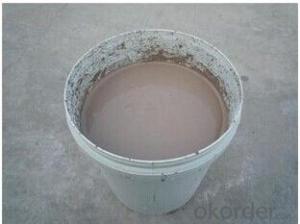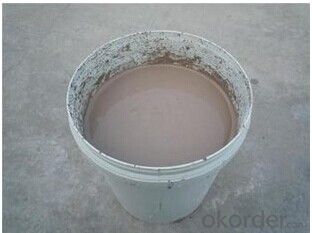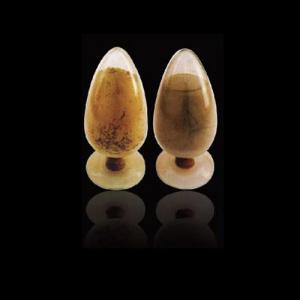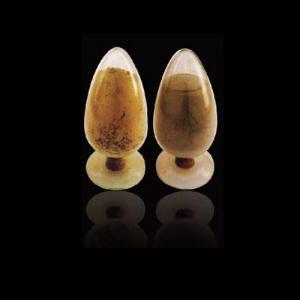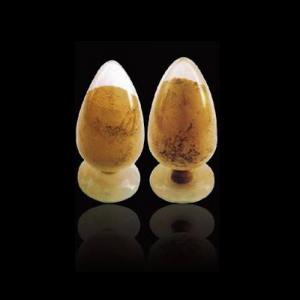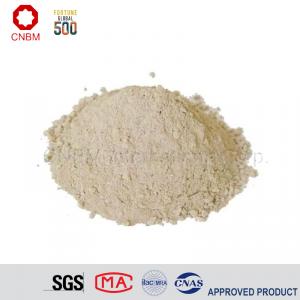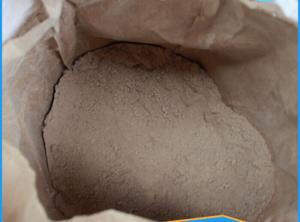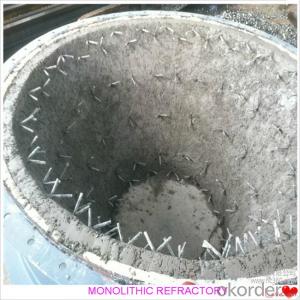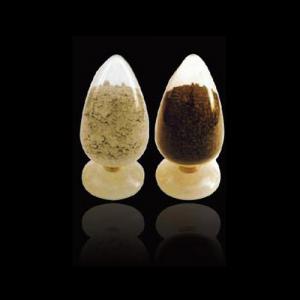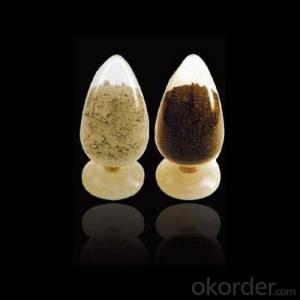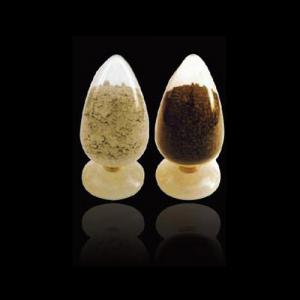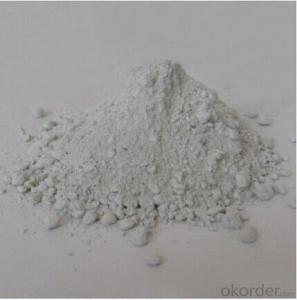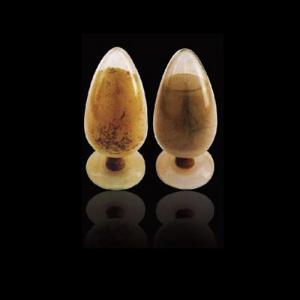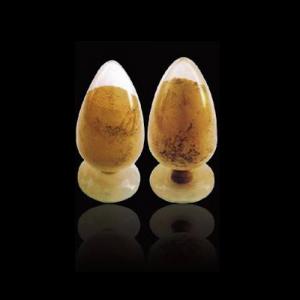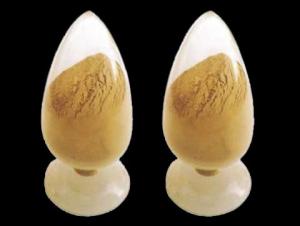Monolithic Refractories High-Temperature Bonder Cement for Iron and Steel Industry
- Loading Port:
- China Main Port
- Payment Terms:
- TT OR LC
- Min Order Qty:
- -
- Supply Capability:
- -
OKorder Service Pledge
OKorder Financial Service
You Might Also Like
TY-AZS33
Shapes and sizes: there are great variety of formats and shapes which are available for different forming and special machine processes.
Application: mainly used for working ends, feeder channel, side walls, superstructures, crowns, sidewalls, tank bottoms, C-shaped brick and doghouse crown.etc.
TY- AZS36
Shapes and sizes: This product is only available for straight brick.
Application:mainly used for side walls of flame furnaces with embedded melter bottoms, for total security with average pulls and campaign lengths, and superstructures, front wall, back wall, top crown in glass melting furnace.
TY- AZS41
Shapes and sizes: this product is available in a large size straight or approximate bricks and special formats and shapes which are available for special machining processes.
Application: Mainly used for sidewalls, doghouses, throat, bottom budding, Dam blocks, electric block corners.
Item | Behaviors | |||
TY-AZS33 | TY-AZS36 | TY-AZS41 | ||
Chemical Composition | Al2O3 | ≥50.00 | ≥49.00 | ≥45.00 |
ZrO2 | ≥32.50 | ≥35.50 | ≥40.50 | |
SiO2 | ≤15.50 | ≤13.50 | ≤13.00 | |
Na2O+K2O | ≤1.30 | ≤1.35 | ≤1.30 | |
Bulk density g/cm3 | ≥3.75 | ≥3.85 | ≥4.00 | |
Apparent Porosity % | ≤1.2 | ≤1.0 | ≤1.2 | |
Cold Crushing Strength Mpa | ≥300 | ≥300 | ≥300 | |
Exudation Temperature of Glass Phase | ≥1400 | ≥1400 | ≥1410 | |
Bubble Separation Ratio(1300°C×10h) | ≤1.5 | ≤1.4 | ≤1.0 | |
Anti-corrosion rate of glass liquid 1500°C×36h (mm/24h)% | ≤1.45 | ≤1.3 | ≤1.2 | |
Apparent density (g/cm3) | PT(RN RC N) | ≥3.45 | ≥3.50 | ≥3.70 |
ZWS(RR EVF EC ENC) | ≥3.60 | ≥3.70 | ≥3.90 | |
WS( RT VF EPIC FVP DCL) | ≥3.70 | ≥3.80 | ≥4.00 | |
- Q: How do monolithic refractories protect lining in ladles and tundishes?
- The unique properties and characteristics of monolithic refractories are crucial for protecting the lining in ladles and tundishes. Unlike traditional brick or tile linings, which consist of individual units, monolithic refractories are composed of a single, solid piece. One way in which monolithic refractories protect the lining is through their high density and low porosity. This ensures that the refractory material acts as an effective barrier against the penetration of molten metal and slag. By preventing the infiltration of these corrosive substances, the monolithic refractory shields the lining from chemical attack, ensuring its longevity and performance. Moreover, monolithic refractories exhibit excellent thermal shock resistance. The extreme temperature fluctuations experienced by ladles and tundishes during the steelmaking process can cause cracking or spalling. However, monolithic refractories are able to withstand these rapid temperature changes without damage, protecting the lining from thermal harm. Additionally, monolithic refractories offer superior strength and mechanical properties. Ladles and tundishes face various mechanical stresses, such as the weight of the molten metal and the movement of the refractory lining during pouring. The robustness of monolithic refractories allows them to withstand these forces, preventing any structural failure or damage to the lining. Another advantage of monolithic refractories is their ease of installation. Unlike brick or tile linings, which require meticulous jointing and careful placement, monolithic refractories can be applied as a single, cohesive layer. This seamless application ensures a uniform protective barrier, eliminating weak points or gaps that could compromise the lining's integrity. In conclusion, monolithic refractories play a vital role in protecting the lining in ladles and tundishes. Their dense, impermeable nature prevents the penetration of molten metal and slag, while their thermal shock resistance, mechanical strength, and easy installation contribute to the overall durability and longevity of the lining, ensuring its effective performance in the demanding steelmaking environment.
- Q: How do monolithic refractories withstand high temperatures and thermal cycling?
- Monolithic refractories withstand high temperatures and thermal cycling due to their unique composition and structure. They are made from a single piece or material, which eliminates joints or seams that could be vulnerable to thermal stress. Additionally, they are designed with a high thermal conductivity and low thermal expansion, allowing them to expand and contract without cracking or spalling. This enables them to maintain their integrity and mechanical strength even under extreme temperature fluctuations, making them highly durable and suitable for applications in industries such as steel, cement, and petrochemical.
- Q: How are monolithic refractories inspected and tested for quality assurance?
- Monolithic refractories are inspected and tested for quality assurance through various methods. Visual inspections are conducted to check for any visible defects such as cracks, spalling, or other physical damages. In addition, non-destructive testing techniques like ultrasonic testing and X-ray inspection are used to detect any internal flaws or inconsistencies in the refractory material. Furthermore, mechanical testing such as compression and flexural strength tests are performed to evaluate the mechanical properties of the monolithic refractories. These inspections and tests ensure that the refractories meet the required quality standards and can withstand the harsh operating conditions they are designed for.
- Q: What are the challenges faced in the application of monolithic refractories?
- There are several challenges faced in the application of monolithic refractories. Firstly, one of the major challenges is the proper installation of monolithic refractories. Unlike traditional brick refractories that can be easily laid and stacked, monolithic refractories require specialized skills and techniques for proper application. The consistency and workability of the refractory material must be carefully controlled, and the installation process often requires the use of specialized equipment such as gunning machines or vibrating tools. Another challenge is the selection of the appropriate monolithic refractory material for a specific application. There are various types of monolithic refractories available, each with its own unique properties and suitability for different environments. Choosing the wrong type of refractory material can result in premature failure and costly repairs. Therefore, it is essential to understand the operating conditions, such as temperature, chemical exposure, and mechanical stress, to select the most suitable monolithic refractory material. Additionally, monolithic refractories are susceptible to thermal shock and erosion due to their composition and application method. They are typically made from fine powders that are mixed with water or other binding agents to form a paste. This paste is then applied and dried to form a solid refractory lining. However, during the heating and cooling cycles, monolithic refractories can experience thermal expansion and contraction, leading to cracking and spalling. Moreover, the chemical reactions occurring in some industrial processes can cause chemical attack and erosion of the refractory lining, reducing its lifespan. Furthermore, maintenance and repair of monolithic refractories can also be challenging. Unlike brick refractories that can be easily replaced, repairing monolithic refractories often requires skilled personnel and specialized techniques. The damaged area needs to be removed, and a new layer of refractory material must be applied, ensuring proper bonding and compatibility with the existing lining. This process can be time-consuming and costly, particularly in high-temperature applications where extended downtime can result in significant production losses. In summary, the challenges faced in the application of monolithic refractories include proper installation techniques, selection of the appropriate material, susceptibility to thermal shock and erosion, and complex maintenance and repair procedures. Overcoming these challenges requires expertise, careful planning, and a thorough understanding of the specific operating conditions and requirements for each application.
- Q: How do monolithic refractories perform in aluminum holding furnace applications?
- The use of monolithic refractories in aluminum holding furnace applications has been proven to be highly efficient and effective. These refractories are designed specifically to withstand the extreme temperatures and chemical environments found in these furnaces. One major advantage of monolithic refractories is their ability to create a continuous and seamless lining in the furnace. This eliminates the need for individual bricks or tiles, reducing the risk of thermal shock and cracking. The absence of joints also minimizes the likelihood of molten aluminum leaking through the lining, ensuring better containment and heat retention. Monolithic refractories also provide excellent thermal insulation properties, which are essential in aluminum holding furnaces. They have low thermal conductivity, helping to reduce heat loss and maintain a stable temperature within the furnace. This leads to improved energy efficiency and lower operating costs. Furthermore, monolithic refractories have exceptional resistance to corrosion and chemical attack from molten aluminum and its by-products, such as dross and fluxes. This resistance ensures a longer lifespan for the refractory lining, reducing the need for maintenance and downtime. In addition, monolithic refractories are known for their easy installation and repair. They can be installed quickly and easily, requiring minimal downtime for furnace maintenance. If any localized damage or wear occurs, repairs can be efficiently made by patching or spraying the affected area. In conclusion, monolithic refractories are an excellent choice for aluminum holding furnace applications due to their seamless lining, thermal insulation properties, resistance to corrosion, and easy installation and repair. These refractories significantly enhance the overall performance and efficiency of aluminum holding furnaces.
- Q: What are the main applications of monolithic refractories in the iron and steel industry?
- Monolithic refractories are widely used in the iron and steel industry for various applications such as lining furnaces, ladles, and tundishes. They provide excellent thermal insulation, high resistance to thermal shock, and resistance to chemical reactions with molten metal. These refractories help in maintaining consistent temperature and reducing heat loss, thereby ensuring efficient and cost-effective production processes in the iron and steel industry.
- Q: How do monolithic refractories mitigate heat loss in iron and steel operations?
- Monolithic refractories are highly effective in mitigating heat loss in iron and steel operations due to their unique properties and composition. These refractories are made from a single, continuous material, making them resistant to cracks and gaps that could allow heat to escape. One key advantage of monolithic refractories is their excellent thermal conductivity and insulation properties. They have a low thermal conductivity, which means they can effectively restrict the transfer of heat from the hot areas to the cooler surroundings. This insulation property helps maintain high temperatures within the iron and steel operations, reducing heat loss to the environment. Another factor that contributes to the heat loss mitigation is the ability of monolithic refractories to form a tight seal with the metal structures they are applied to. They adhere well to the surfaces and fill in any gaps or irregularities, creating a solid barrier against heat loss. This seal minimizes the possibility of heat escaping, ensuring that the energy generated within the operations is effectively utilized. Furthermore, monolithic refractories have high resistance to thermal shock. In the iron and steel industry, extreme temperature fluctuations are common, which can lead to material deterioration and cracks. Monolithic refractories, with their high thermal shock resistance, are able to withstand these rapid temperature changes without compromising their structural integrity. This ensures the longevity and effectiveness of the refractories in mitigating heat loss. Overall, monolithic refractories play a crucial role in mitigating heat loss in iron and steel operations by providing excellent insulation, forming a tight seal, and withstanding thermal shock. These properties allow the refractories to maintain high temperatures within the operations, optimize energy utilization, and enhance the overall efficiency of the processes.
- Q: How do monolithic refractories contribute to the overall reliability of iron and steel processes?
- Monolithic refractories play a crucial role in enhancing the overall reliability of iron and steel processes in several ways. Firstly, they provide excellent thermal insulation, which helps in maintaining consistent and controlled temperatures within the furnaces and other equipment involved in the production process. This ensures the stability of the process and avoids any sudden temperature fluctuations that could lead to equipment failure or product quality issues. Secondly, monolithic refractories offer high resistance to thermal shocks and mechanical stresses, which are common in iron and steelmaking operations. These refractories can withstand extreme temperatures, rapid heating and cooling cycles, and the corrosive nature of molten metals, thereby prolonging the lifespan of the equipment and reducing the frequency of repairs or replacements. Moreover, monolithic refractories have a superior ability to resist chemical attacks from molten metals, slag, and other harsh substances encountered in iron and steel processes. This resistance prevents the refractories from deteriorating or corroding over time, ensuring their integrity and preventing any contamination of the metal being produced. Lastly, the use of monolithic refractories allows for greater design flexibility and ease of installation compared to traditional brick refractories. This flexibility enables the construction of complex shapes and structures, optimizing the efficiency and productivity of iron and steelmaking processes. Overall, monolithic refractories contribute significantly to the reliability of iron and steel processes by providing excellent thermal insulation, resistance to thermal shocks and chemical attacks, and facilitating flexible design and installation options.
- Q: Can monolithic refractories be used for the lining of reheating furnaces and walking beam furnaces?
- Yes, monolithic refractories can be used for the lining of reheating furnaces and walking beam furnaces. Monolithic refractories are versatile and can be shaped to fit the specific requirements of these furnaces. They offer excellent thermal insulation, high temperature resistance, and durability, making them suitable for withstanding the extreme conditions within these furnaces. Additionally, monolithic refractories can be easily installed, repaired, and replaced, making them a practical choice for lining these types of furnaces.
- Q: What are the benefits of using monolithic refractories in the iron and steel industry?
- There are several benefits of using monolithic refractories in the iron and steel industry. Firstly, monolithic refractories offer excellent thermal shock resistance, allowing them to withstand extreme temperature changes without cracking or spalling. This is crucial in the iron and steel industry, where materials are subjected to high temperatures during processes like melting, casting, and heat treatment. Secondly, monolithic refractories have superior corrosion resistance, making them highly durable against the corrosive effects of molten metals and slag. This is particularly important in the iron and steel industry, where materials come into contact with aggressive molten iron, steel, and various chemical compounds. Additionally, monolithic refractories provide excellent mechanical strength and abrasion resistance. They have the ability to withstand mechanical stress, vibrations, and impacts typically encountered in the iron and steel industry. This ensures longer refractory lifespan, reduces downtime for repairs or replacements, and improves overall operational efficiency. Moreover, monolithic refractories offer ease of installation and repair. Unlike traditional refractory bricks that require complex and time-consuming masonry work, monolithic refractories can be installed quickly and easily using simple methods like casting, gunning, or spraying. This saves time and labor costs during initial installation and subsequent maintenance or repairs. Furthermore, monolithic refractories provide flexibility in design and application. They can be tailored to specific shapes and sizes, allowing for customized linings in different parts of the iron and steel manufacturing process. This versatility enhances the overall efficiency and effectiveness of refractory linings, optimizing the production output and ensuring consistent quality of the finished iron and steel products. In conclusion, the benefits of using monolithic refractories in the iron and steel industry are numerous. They offer exceptional thermal shock resistance, corrosion resistance, mechanical strength, and abrasion resistance. They are easy to install and repair, and their flexibility allows for customized designs. Overall, monolithic refractories contribute to improved productivity, reduced downtime, and enhanced product quality in the iron and steel industry.
Send your message to us
Monolithic Refractories High-Temperature Bonder Cement for Iron and Steel Industry
- Loading Port:
- China Main Port
- Payment Terms:
- TT OR LC
- Min Order Qty:
- -
- Supply Capability:
- -
OKorder Service Pledge
OKorder Financial Service
Similar products
Hot products
Hot Searches
Related keywords
